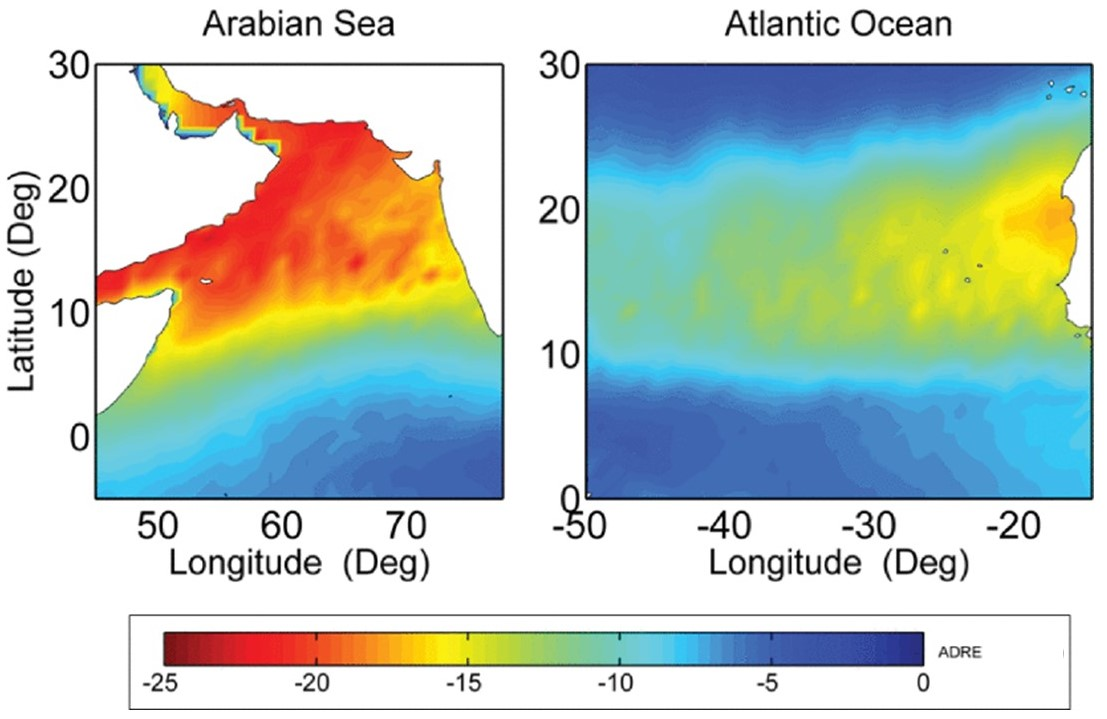MEGHA TROPIQUES
Land surface characterization of microwave emissivities at MADRAS payload frequencies:
The microwave payload MADRAS (Microwave Analysis and Detection of Rain and Atmospheric Systems) on-board MT is a dual (H and V) polarization microwave imager measuring radiance at five frequencies (18.7, 23.8, 36.5, 89 and 157 GHz), except for 23.8 GHz (V only). It is a conical scanning (~ 53° incidence angle), self-calibrating, total power radiometer. The data from MT-MADRAS has been utilized for studying the terrain characteristics using brightness temperature (TB) data, estimating the surface emissivity using an in-house developed microwave RT algorithm, and generating surface emissivity maps for all the MADRAS channels. Comparison of MT-derived emissivity has been conducted with those from concurrent and collocated TRMM Microwave Imager (TMI) observations on global basis, with the limited data available.
Utility of SAPHIR payload data for deriving Upper tropospheric humidity (UTH):
Upper Tropospheric Humidity (UTH) has been derived using a ‘brightness temperature transformation’ method from the humidity sounder channels of SAPHIR payload aboard Megha-Tropiques (MT). These channels are very close to the water vapour absorption peak at 183.31 GHz. The channels at channel 183±0.2 GHz enables retrieval of humidity up to the highest altitude possible with the present nadir looking microwave humidity sounders. Transformation coefficients for the first three channels for all the incidence angles have been derived and are used to convert brightness temperatures to free/upper tropospheric humidity at different pressure levels. UTH over the tropical belt has been studied taking advantage of the first humidity product with high spatial and temporal resolution.
Comparison of Megha-Tropiques derived Humidity with those from Ground Based Microwave Radiometer:
The comparison of Megha-Tropiques SAPHIR (MTS) derived humidity is important for the effective utilisation of MTS RH for addressing scientific issues. Therefore, a validation has been made by comparing the MTS derived layer averaged Relative Humidity (RH (%)) with that of the ground based multi-frequency Microwave Radiometer Profiler (MRP), over Thiruvananthapuram. The comparison between the MRP and the MTS derived RH has been made in five different altitudinal layers (centred at 0.75, 2.25, 4, 6.25 and 9.2 km range) strictly under clear sky condition. This activity has been carried out with the collocated MRP data.
Direct observations of the diurnal variation of aerosol radiative effect efficiency at top-of-atmosphere (TOA) over the Arabian Sea and the Atlantic Ocean using the shortwave radiative fluxes estimated using Megha-Tropiques – ScaRaB:
The uniqueness of Megha-Tropiques ScaRaB to make observations at different time of the day during the orbital precession cycle of 51 days is utilized to study direct observations of the diurnal variation of aerosol radiative effect efficiency at top-of-atmosphere (TOA) over the Arabian Sea and the Atlantic Ocean. The study focuses on the summer season during which the Arabian Sea witnesses large scale transport of mineral dust, radiative impact of which is least explored. The estimates carried out using MT-ScaRaB during noontime are compared with the corresponding estimates carried out at low solar zenith angles using CERES onboard polar orbiting sun-synchronous satellite. The ADREE estimated using CERES data are comparable with those derived from MT-ScaRaB at low solar zenith angles.

Aerosol direct radiative effect (ADRE) over the Arabian Sea and the Atlantic Ocean estimated using MT-ScaRaB